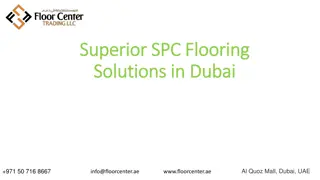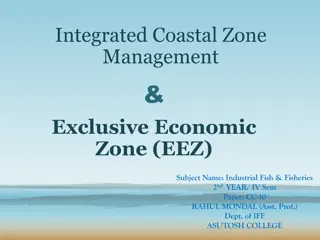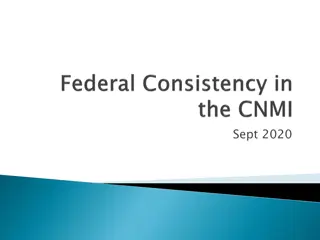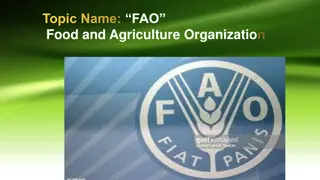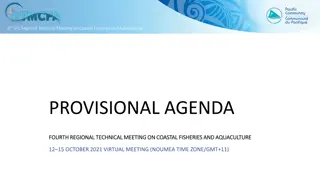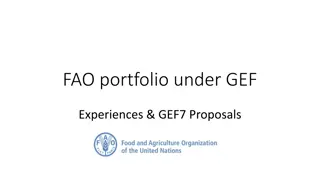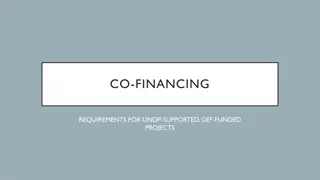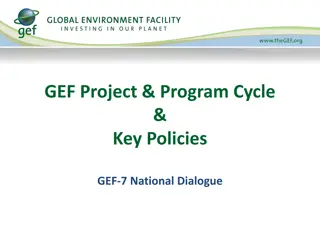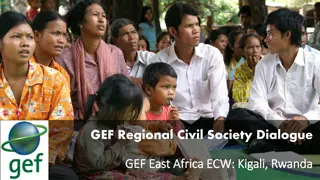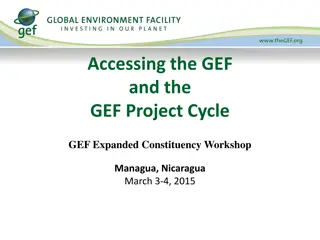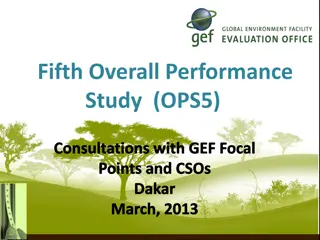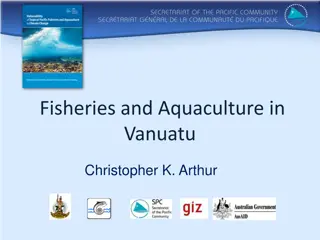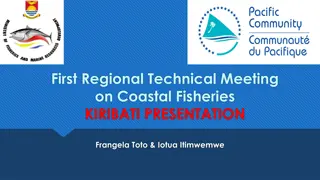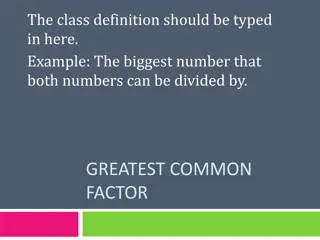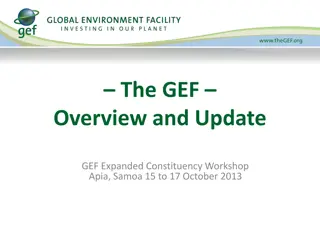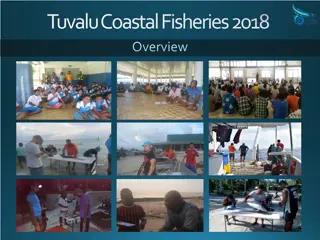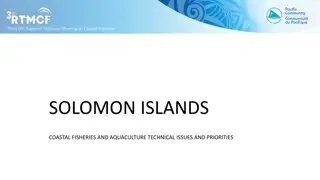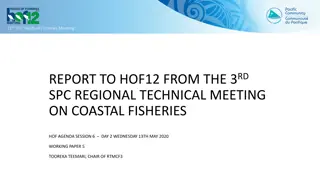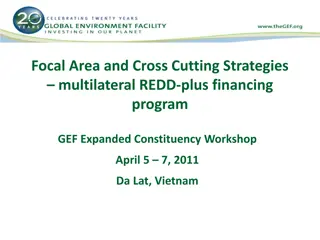Developing a Regional Coastal Fisheries Project with SPC-FAO for GCF or GEF-7
Discussion between SPC and FAO on creating a Concept Note for a regional multi-country GCF or GEF-7 coastal fisheries project. The session aims to explore collaboration models, project magnitude, specific themes, and next steps for implementing the project. The focus is on addressing food production demands, transformative solutions, and financing priorities for Small Island Developing States (SIDS).
Download Presentation

Please find below an Image/Link to download the presentation.
The content on the website is provided AS IS for your information and personal use only. It may not be sold, licensed, or shared on other websites without obtaining consent from the author.If you encounter any issues during the download, it is possible that the publisher has removed the file from their server.
You are allowed to download the files provided on this website for personal or commercial use, subject to the condition that they are used lawfully. All files are the property of their respective owners.
The content on the website is provided AS IS for your information and personal use only. It may not be sold, licensed, or shared on other websites without obtaining consent from the author.
E N D
Presentation Transcript
SPC - FAO Discussion on developing a Concept Note for a regional multi country GCF or GEF 7 coastal fisheries project
Background to the agenda item SPC & FAO SAP working closely on fisheries related projects over many years FAO is a GEF Implementing Agency and GCF accredited agency FAO Members attending 2016 FAO Regional Conference requested: FAO to collaborate more with CROP agencies Supported Blue Growth Identified some priority actions for Asia and Pacific subregions FAO looking to partner with CROPS vis a vis new funding opportunities such as GEF 7 and GCF
Full scale 50-250 mill Objective of the session To inform about GCF - GEF 7 approaches To look at SPC and FAO collaboration as a model for a GEF 7 project To seek input on: The magnitude and scope of a GEF 7 project Regional multi country project specific themes or areas of interest to SPC-FAO Members and GEF Next steps How to move forward and report back? Medium Project 10-50 mill GEF GRANT National Regional Donors Co-Financing Partners GCF PROJECT FSP Grant USD 4-30 million THE PROJECT Small Project 1 - 50 mill BASELINE
GEF The need for transformative Solutions Food and Agriculture Systems: The world will require more than a 50% increase in food production to meet dietary demands from a world population of nine to ten billion by 2050 The failure of markets to incorporate the value of nature and the services it provides. GEF s experience in the management of transboundary focused on environmental security and resilience. Energy, food, water, and many other systems are critical for resilience. SIDS identified priorities include resilience to protect biodiversity and promote sustainability Socio-ecological Resilience GCF focus on adaptation / mitigation to climate change PSIDS Growing Food Gap, NCDs, Dev. Aspirations,
GEF-7 Financing in Response to SIDS Priorities GEF IMPACT PROGRAMS common to FAO and SPC priorities Biodiversity land soil water
GEF 7 Integrated Impact Programs [IPs] FAO and SPC Target Areas Integrated Impact Programs addressing multiple benefits across Conventions for which the GEF serves as a financial mechanism 1. GEF - Sustainable Fisheries Impact Program 2. Healthy Oceans & Coastal ecosystems IP Sustainable Fisheries IP A new Impact Program on Fisheries will build on 25 years of GEF investments Recognizes the vital role fisheries play in eliminating hunger, promoting health, and reducing poverty 4. 3. Environmental Security IP Circular Economy This Impact Program will benefit from investments from other IPs (Healthy Oceans & coastal ecosystems + Environmental Security + Circular Economy) A project that spans more than one IP would be more attractive to GEF
GEF 7 Many GEF 7 Impact Programs are priorities for FAO and SPC and areas within our mandates Sustainable Fisheries (SF) IP, Healthy Oceans & Coastal Ecosystems (HOCE) IP Other GEF Impact Areas SPC FAO Food Security through sustainable Fisheries H H Marine Protected Areas (MPAs) Managed Areas H Coral Reefs, Mangroves, Saltmarshes and Sea grasses, Deltas H Marine pollution from land based sources M Promote market incentives throughout the fishery value chain (economic development) H H Strengthen and create governance measures, including working with countries to adjust perverse incentive structures, with particular focus on IUU H H Promote technology to support monitoring, compliance & surveillance H H Promote innovative financing, particularly crowd-in private sector investments in fisheries using non-grant financial instruments that can reduce the risk of investors Build capacity at all levels including private, public and civil society sectors to restore and maintain functional fisheries H H Increasing sustainability and resilience of food value chains H H Diversified agro-ecological food production systems H H
Ideas for elements of a project that arose from HOF discussions Good Governance Increased domestic production and distribution of oceanic fishery resources Coastal Monitoring, Control & Surveillance Efficient and effective Agricultural food production systems More effective management of coastal resources [tenure, co-management, fisher stakeholder participation] Safety of fishing Early warning Early Action Economic Development & commercialization Reduction of food loss and waste (preservation techniques) Equitable Access & Distribution of resources Food & Nutrition Security Institutional Coordination and Strengthening Safe food consumption (ciguatera + other food borne disease, pathogens) Coastal community resilience Food Gap Reductions Trade and Marketing of fish products


